How Pallet Inverters Solve heat-resistant equipment for food & beverage in Saudi Arabia?
I'm Vincent Liu, founder of SHJLPACK. My entire career has been in the world of heavy industry. I started as an engineer and eventually built my own factory making coil packing machines for the steel industry. This industry has been good to me. It allowed me to achieve my goals and help many clients grow their businesses. Now, I want to share what I've learned about industrial equipment. While my background is in steel, the principles of smart, reliable automation are universal. Recently, a challenge in the Saudi Arabian food and beverage sector caught my attention. It was about managing temperature-sensitive goods in extreme heat. This problem reminded me of the harsh conditions we face in steel mills. The solution is surprisingly simple and effective.
A pallet inverter is a critical tool for the food and beverage industry in Saudi Arabia. It solves the need for specialized heat-resistant equipment by drastically reducing the time products are exposed to high ambient temperatures. The machine allows for the rapid transfer of goods from one pallet to another, such as from a wooden pallet to a hygienic, cold-storage-ready plastic pallet. This swift process happens in under a minute. It protects the cold chain and ensures product quality and safety without requiring every piece of handling equipment to be individually heat-proofed.
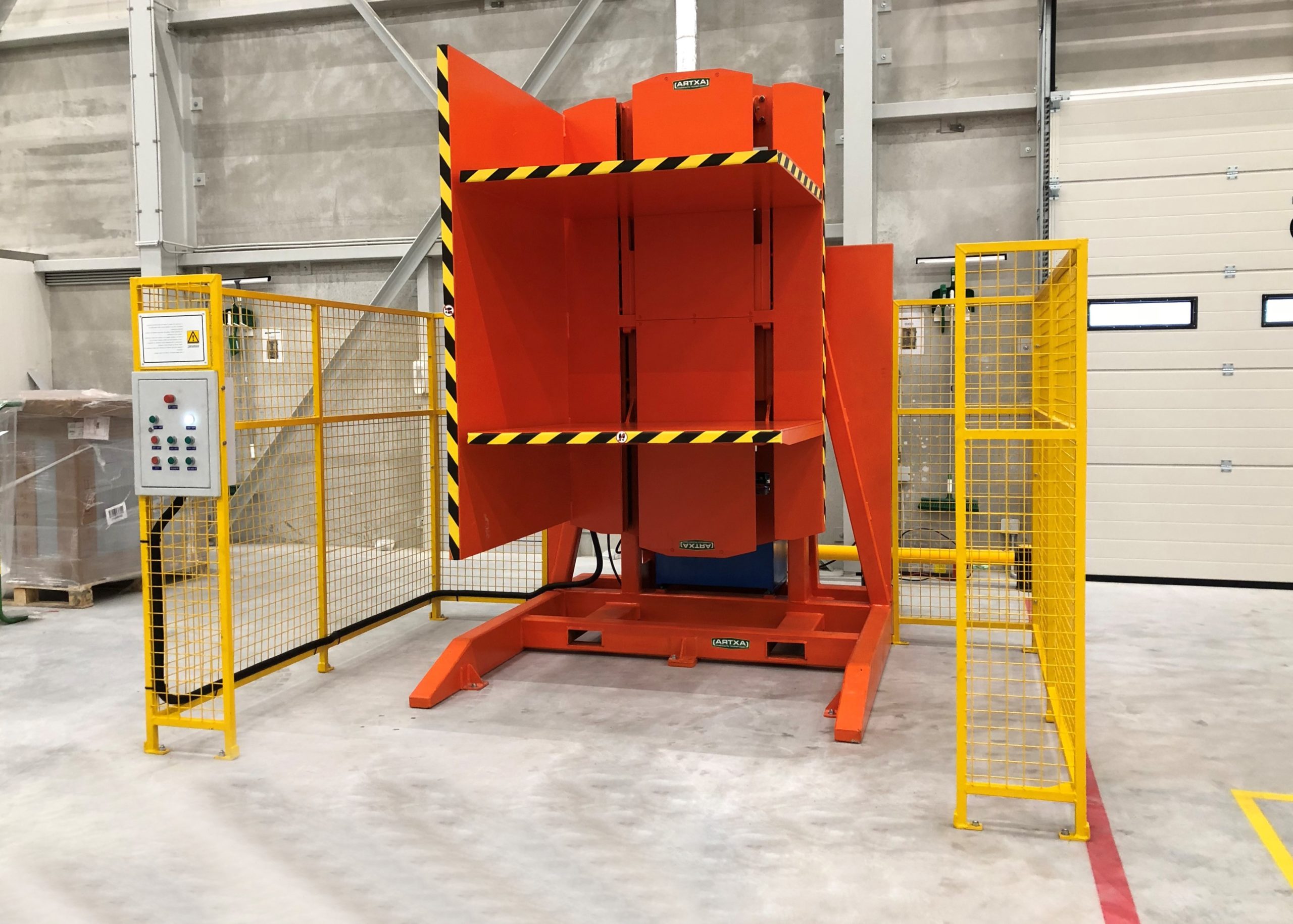
This may sound like a simple mechanical fix. But its impact on operations, product quality, and profitability is enormous. It's a strategic move, not just an equipment purchase. It addresses a fundamental weakness in many supply chains operating in demanding climates. Let's explore the specific challenges in Saudi Arabia and see how this machine provides a powerful solution. We will look at how it works, what features are important, and why I believe it's a critical investment.
What specific challenges does the Saudi Arabian climate pose for food and beverage logistics?
The climate in Saudi Arabia is not just a weather forecast; it's a constant operational hurdle. You are dealing with intense, prolonged heat. You also face high humidity in coastal areas and pervasive dust everywhere. These environmental factors create a unique set of problems for your logistics. Your entire supply chain is under attack, from the moment a product leaves the production line until it reaches the final consumer.
This harsh environment can cause serious issues. Wooden pallets can warp or become brittle. Condensation can form on products, damaging packaging and creating a breeding ground for mold. Machinery can overheat, leading to unexpected breakdowns and expensive downtime. All of these factors threaten your products, increase your costs, and put your business at risk. Understanding these specific climate-related challenges is the first step toward building a truly resilient and efficient logistics operation. Once you identify the weak points, you can implement targeted solutions, like a pallet inverter, to protect your business.
The Saudi Arabian climate creates severe challenges for food and beverage logistics. These include the rapid increase of product temperatures during outdoor transfers, which breaks the cold chain. Condensation also becomes a major issue when moving goods between hot outdoor air and cold storage facilities. This moisture damages packaging and compromises product quality. Furthermore, the heat and humidity accelerate the degradation of packaging materials like wooden pallets and cardboard boxes, directly threatening product safety, shelf life, and regulatory compliance.
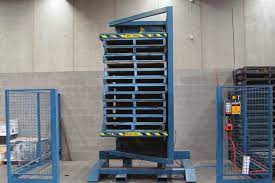
Let’s dive deeper into these distinct challenges. They go beyond simple inconvenience and have a direct financial impact on your operations. Recognizing them is crucial for any business leader aiming for excellence in the region.
The Impact of Extreme Ambient Temperatures
In many parts of Saudi Arabia, daytime temperatures can exceed 45°C (113°F) for months. This isn't just uncomfortable; it's a direct threat to temperature-sensitive food and beverage products. Dairy, fresh produce, chocolate, and many pharmaceuticals must be kept within a strict temperature range. The loading dock is often the most vulnerable point in the cold chain. A pallet of chilled goods sitting in the sun for even 15-20 minutes can experience a significant rise in surface temperature. This temperature abuse can shorten shelf life, alter taste and texture, and in the worst cases, lead to spoilage and bacterial growth. This creates waste and financial loss. It also poses a serious risk to consumer health and your brand's reputation. The challenge is to move products from a temperature-controlled truck to a temperature-controlled warehouse as quickly as humanly possible, minimizing this exposure window.
The Problem of Condensation and Humidity
Coastal cities like Jeddah and Dammam add another layer of complexity: high humidity. When a cold pallet is moved from an air-conditioned truck or cold storage into the hot, humid outside air, condensation immediately forms on the packaging. This is simple physics at work. This moisture can weaken cardboard boxes, causing them to lose structural integrity and potentially collapse during stacking. It can also peel off labels, making product tracking difficult. More critically, the damp environment on the product's surface can promote the growth of mold and bacteria, creating a food safety hazard. This "pallet sweat" is a silent destroyer of product value and a major headache for quality control managers.
Dust and Sand Contamination Risks
The dry, desert regions of Saudi Arabia present a different but equally serious challenge: dust and sand. Fine particles are everywhere and can easily contaminate products and packaging during transfer. This is especially problematic for food items. Wooden pallets are particularly bad in this regard. They are porous, can splinter, and can harbor dust and other contaminants. When these pallets are brought into a clean production or storage environment, they bring the contamination with them. This creates a hygiene risk and can violate food safety standards like HACCP (Hazard Analysis and Critical Control Points). Keeping the supply chain clean and free from environmental debris is a non-negotiable requirement for the food and beverage industry.
| Environmental Challenge | Risk of Manual Handling | How Automation Mitigates the Risk |
|---|---|---|
| Extreme Heat | Slow transfer leads to product temperature rise, spoilage. | Fast, sub-60-second transfer minimizes thermal exposure. |
| High Humidity | Condensation (pallet sweat) damages boxes, promotes mold. | Allows transfer to a dry, clean pallet inside, away from humid air. |
| Dust and Sand | Contaminated wooden pallets enter clean zones. | Enables switching to a sanitized plastic pallet before entering the facility. |
How do pallet inverters maintain product integrity in extreme temperatures?
You work hard to maintain the cold chain. You invest in refrigerated trucks and climate-controlled warehouses. But the system is only as strong as its weakest link. That weak link is often the transfer point—the loading dock. It's where your carefully chilled products are most exposed to the punishing outside heat. This is a critical moment where product integrity is won or lost.
Manual destacking or restacking of a pallet is a slow and laborious process. Workers have to move boxes one by one. During this time, your pallet of frozen chicken or chilled dairy products is just sitting there. The sun is beating down. The ambient temperature is rising. With every minute that passes, the product's temperature climbs, its quality degrades, and the risk of spoilage increases. This is a race against time that manual labor often loses. A pallet inverter is designed specifically to win this race. It is built for speed and efficiency. By mechanizing the process, it can invert and transfer an entire pallet load in less than 60 seconds. This simple act of automation dramatically cuts the exposure time and securely preserves the cold chain.
Pallet inverters maintain product integrity in extreme temperatures primarily by minimizing thermal exposure through speed. Their rapid, 180-degree rotation process allows for the swift exchange of pallets in a controlled or semi-controlled environment, often right at the dock door. For example, a non-hygienic wooden pallet from a truck can be swapped for a clean, cold-storage-safe plastic pallet in under a minute. This speed ensures the product's core temperature remains stable, preventing temperature abuse and protecting its quality, safety, and shelf life.
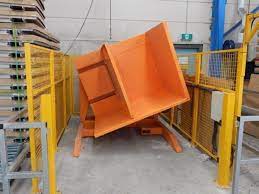
The mechanics are straightforward, but the impact is profound. By transforming a slow, risky manual task into a quick, automated process, the pallet inverter becomes a guardian of your product's quality. Let's look closer at how this speed and control translate into real-world protection for your goods.
The Principle of Speed: Minimizing the Transfer Window
The core advantage of a pallet inverter is its speed. A manual team might take 15 to 30 minutes to transfer a full pallet load. In the Saudi sun, that is more than enough time for irreversible damage to occur. A pallet inverter accomplishes the same task in approximately 50-60 seconds. This isn't just an incremental improvement; it's a game-changer. By reducing the exposure time by over 95%, you effectively eliminate the loading dock as a major risk point in your cold chain. The goods are moved from one controlled environment (the truck) to another (the warehouse) with almost no time spent in the hostile environment in between. This speed directly translates into better product quality, longer shelf life, and reduced spoilage-related losses. It's a simple equation: less time in the heat means less damage to the product.
Enclosed Systems for a Controlled Transfer
Many pallet inverters are designed as semi-enclosed or fully enclosed systems. This design provides an additional layer of protection during the transfer process. When the pallet is loaded into the inverter, it is shielded from direct sunlight and blowing dust. The inversion happens within the machine's controlled space. This is a significant advantage over manual handling, which occurs completely in the open. Some advanced setups integrate the pallet inverter directly into the building wall at the loading dock. The outside door opens, the pallet is loaded, the door closes, and the inversion happens entirely inside the facility. This creates a true airlock, ensuring the goods are never exposed to the outside climate at all. This level of control is the gold standard for maintaining product integrity.
Reducing Product Stress and Damage
Manual handling is not just slow; it can also be rough. Boxes can be dropped, crushed, or improperly stacked. This physical damage can be just as costly as temperature abuse. A pallet inverter handles the entire load as a single, stable block. The machine uses adjustable, padded clamps to secure the load gently but firmly before rotating it. The pressure is distributed evenly across the entire stack, preventing crushing or shifting. The rotation is smooth and controlled. This process is far gentler on the products and packaging than manual restacking. The result is less product damage, fewer returns, and a more professional presentation to your customers.
| Transfer Method | Average Time (Full Pallet) | Thermal Exposure Risk | Physical Damage Risk |
|---|---|---|---|
| Manual Restacking | 15 - 30 minutes | Very High | High |
| Pallet Inverter | < 1 minute | Very Low | Very Low |
| Integrated Inverter | < 1 minute | Near Zero | Very Low |
What are the key features of a pallet inverter designed for the food industry?
Not all industrial machines are created equal. A pallet inverter designed to handle bags of cement is fundamentally different from one meant for cartons of milk. When you are operating in the food and beverage industry, your equipment must meet a much higher standard of hygiene, safety, and precision. Using the wrong type of machine is not just inefficient; it's a serious business risk.
Choosing a generic, non-food-grade machine can introduce a host of problems. It can lead to cross-contamination from materials like rust or peeling paint. It can be difficult to clean, allowing bacteria to hide in crevices. Its clamping mechanism might be too aggressive, crushing your valuable products. These issues can result in damaged goods, failed inspections, and non-compliance with critical food safety standards like HACCP. The financial and reputational cost of such a mistake can be immense. Therefore, selecting a pallet inverter with features specifically designed for the food industry is not a luxury, but a necessity. It protects your products, your customers, and your business.
The key features of a food-grade pallet inverter are centered on hygiene, product protection, and compliance. These machines are typically built with stainless steel or have a powder-coated, food-safe finish to prevent corrosion and facilitate easy cleaning. They are designed with smooth surfaces and no hidden crevices to prevent bacterial growth. Critically, they feature adjustable clamping pressure systems, often with soft-touch pads, to handle delicate food packaging without causing crushing or damage. These features ensure the equipment complies with international food safety standards.
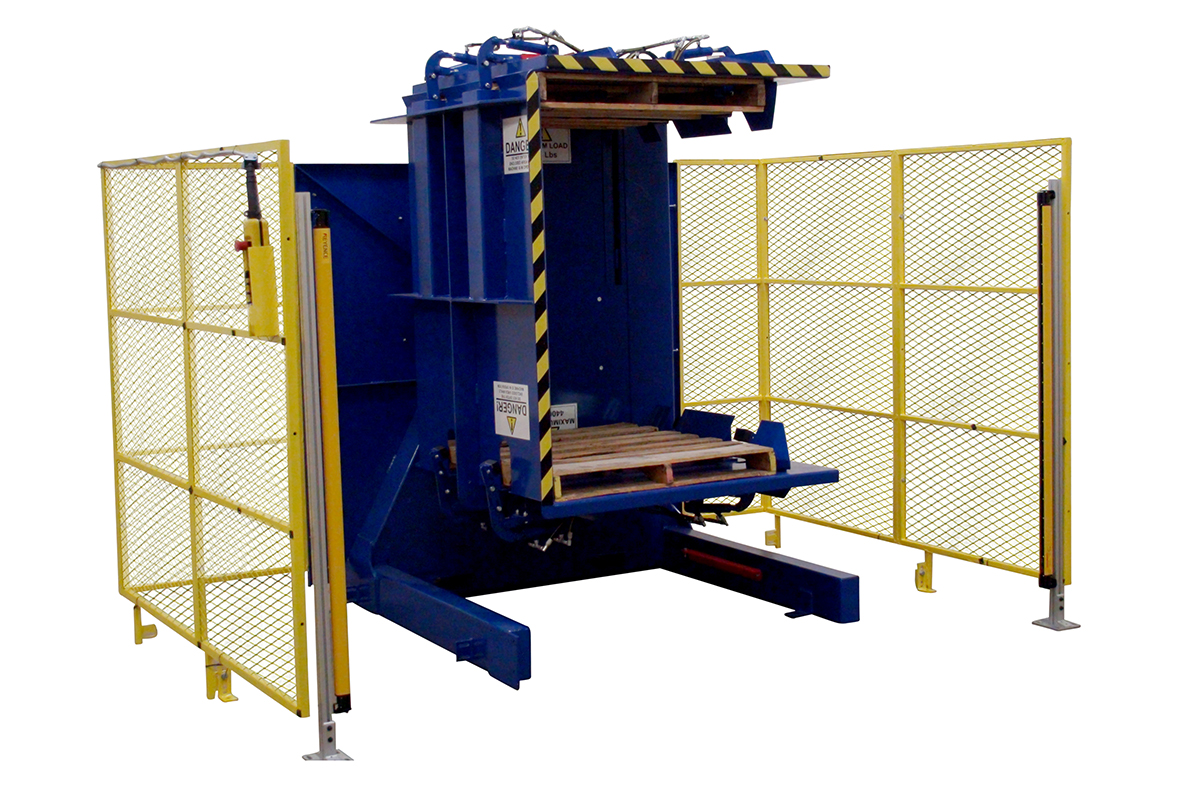
Let's break down these critical features in more detail. When you evaluate a pallet inverter for your food or beverage facility, these are the non-negotiable elements you should be looking for. They are the difference between a simple machine and a true food-grade solution.
Material and Construction: The Stainless Steel Standard
The single most important feature of a food-grade pallet inverter is its construction material. The ideal choice is stainless steel (typically grades 304 or 316). Stainless steel is non-porous, corrosion-resistant, and does not chip or flake like painted mild steel. This is crucial in food environments where frequent washing and sanitizing with chemical agents occur. A painted machine will inevitably rust, and that rust can contaminate your products. Stainless steel construction ensures the machine will withstand harsh cleaning routines for years without degrading. As a more budget-friendly alternative, a machine with a high-quality, FDA-approved powder-coated finish can be acceptable, but stainless steel remains the superior choice for any surface that may come into direct or indirect contact with the product.
Hygienic Design and Cleanability
Beyond the material, the physical design of the machine is critical. A food-grade machine must be "hygienically designed." This means it is built to be easily and thoroughly cleaned. Look for machines with smooth, rounded surfaces and welded seams instead of bolted joints where possible. There should be no hollow cavities, sharp corners, or hidden crevices where water, food particles, and bacteria can accumulate. Components like hydraulic hoses and electrical wiring should be routed neatly and protected to prevent them from becoming contamination traps. The ability to quickly and effectively wash down the entire machine is essential for meeting food safety protocols and preventing cross-contamination between different batches of products.
Adjustable Clamping Pressure for Product Safety
Food and beverage products come in a wide variety of packaging, from sturdy cans to delicate yogurt cups and fragile glass bottles. A one-size-fits-all clamping force will not work. Too much pressure will crush products, while too little will allow the load to shift and collapse during inversion. A key feature of a high-quality pallet inverter is a highly adjustable clamping system. This allows the operator to set the precise pressure needed for each specific product type. Advanced systems use pressure sensors and soft-touch clamping plates to provide feedback and ensure a gentle but secure grip. This feature is vital for preventing product damage, which directly impacts your bottom line by reducing waste.
| Feature | Standard (General Industry) Pallet Inverter | Food-Grade Pallet Inverter | Why it Matters for F&B |
|---|---|---|---|
| Construction | Painted Mild Steel | Stainless Steel or Powder-Coated | Prevents rust, chipping, and chemical corrosion from cleaning. |
| Design | Functional, may have crevices/sharp corners | Hygienic, smooth surfaces, sealed welds | Easy to clean, prevents bacteria growth, ensures compliance. |
| Clamping | Fixed or limited pressure settings | Highly adjustable, soft-touch pressure | Protects delicate packaging, prevents product crushing and waste. |
| Compliance | N/A | Designed for HACCP/GMP standards | Ensures you pass safety audits and protect consumers. |
What is my personal take on this automation investment?
I have spent my life in factories. I've seen firsthand how the right piece of equipment can transform an entire operation. As an engineer and a business owner, I know that every major purchase must be justified. You are not just buying a machine made of steel and wires. You are buying a solution to a problem. You are investing in efficiency, safety, and reliability. This is the mindset you need when considering a pallet inverter.
It is easy to get lost in the technical specifications and price tags. You might hesitate. You might think it is just another expense, another piece of equipment to maintain. This hesitation can be costly. By focusing only on the initial cost, you risk missing the much larger strategic value. In my experience building SHJLPACK and working with steel mills, I have learned one lesson over and over again: investing in robust, intelligent automation is not a cost center. It is a strategic asset that pays for itself many times over. A pallet inverter, much like a good coil wrapping machine in my industry, solves a fundamental bottleneck. It unlocks new levels of efficiency and builds a more resilient business.
My personal take is that a pallet inverter is far more than a simple handling device; it is a strategic investment in operational resilience and quality assurance. In a demanding market like Saudi Arabia, this machine directly attacks critical challenges of cost, quality, and regulatory compliance. It provides a practical, high-impact solution that improves efficiency and protects your brand. In my view, this type of smart automation is what separates market leaders from their competitors, a principle I have seen proven time and again in the steel industry.
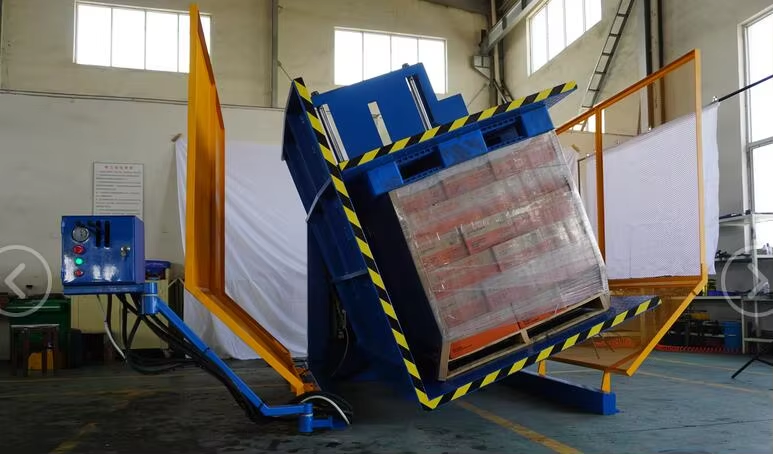
Let me share a few more thoughts, drawing parallels from my own industry and offering some advice on how to approach this kind of investment to ensure your success.
Drawing Parallels: Lessons from the Steel Industry
In the steel industry, we handle massive, heavy coils of steel. The environment is hot, dusty, and dangerous. For years, many processes were done manually. It was slow, unsafe, and led to product damage. Then, we introduced automated wrapping and handling systems. The results were immediate. Injuries went down. Product damage from poor handling disappeared. Most importantly, throughput increased dramatically. We could move more product, faster, and with better quality. A pallet inverter in a food warehouse does the exact same thing, just for a different product. It replaces a slow, risky, manual process with a fast, safe, automated one. It addresses a key bottleneck. The investment in automation in the steel industry wasn't about replacing workers; it was about empowering them to achieve a higher level of productivity and safety. The same logic applies here.
Beyond ROI: Building a Resilient Supply Chain
Of course, you must calculate the Return on Investment (ROI). You will see savings from reduced labor costs, less product spoilage, and fewer damage claims. These numbers are important. But the true value goes beyond a simple ROI calculation. What is the value of your brand's reputation for quality? What is the cost of a failed safety audit or a product recall? What is the benefit of being known as the most reliable supplier in the market? A pallet inverter is an investment in resilience. It makes your supply chain stronger and less vulnerable to the shocks of climate, human error, and contamination. In a competitive market, resilience is a powerful advantage. It allows you to deliver consistently when others cannot, building deep trust with your customers.
Partnering for Success: What to Look for in a Supplier
Finally, remember that you are not just buying a machine. You are entering a long-term relationship with a supplier. A cheap machine from a supplier who disappears after the sale is a terrible investment. You need a partner. This is a principle I built my own company on. Look for a supplier who understands your industry, not just their machine. They should ask questions about your products, your facility, and your goals. They should offer support with installation, training, and maintenance. Like my client Javier from the steel mill, a forward-thinking leader seeks a strategic partner, not just a vendor. A good partner will help you select the right machine and ensure it delivers value for years to come.
| Investment Focus | Short-Term Cost View | Long-Term Strategic View |
|---|---|---|
| Labor | Replaces manual labor hours | Frees up staff for higher-value tasks, improves safety |
| Product | Cost of spoiled/damaged goods | Protects brand reputation, ensures quality consistency |
| Operations | Initial purchase price of machine | Increases throughput, builds a resilient supply chain |
| Supplier | Lowest bidder | A long-term partner providing support and expertise |
Conclusion
A pallet inverter is a powerful tool. It protects product quality, reduces costs, and builds a resilient supply chain, giving you a competitive edge in Saudi Arabia's demanding market.





